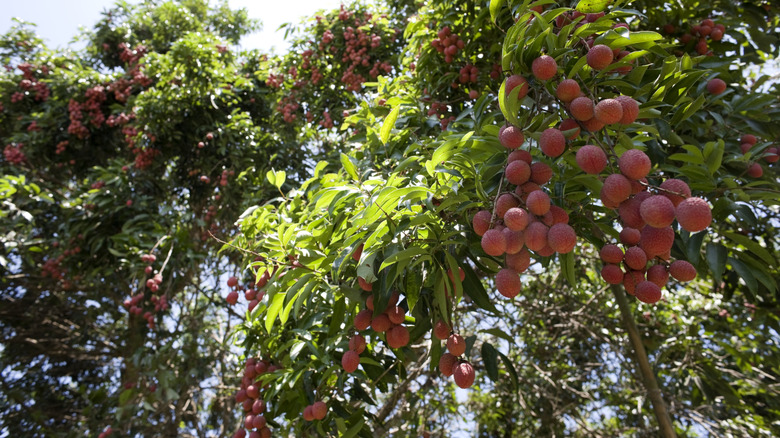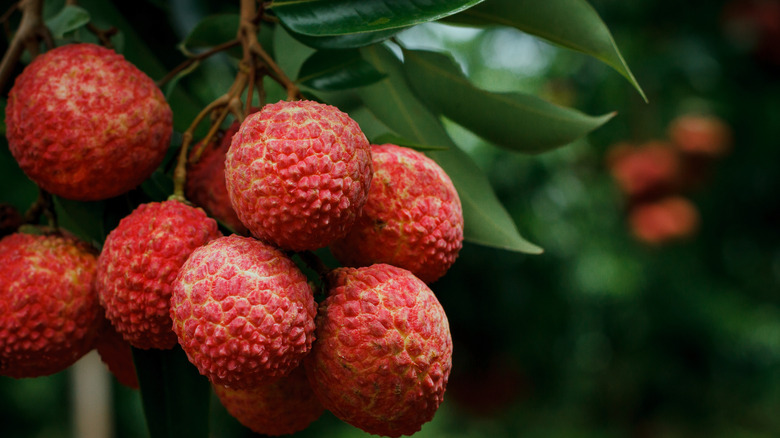Bring Beauty To Your Yard With A Tropical Fruit Tree That's Worth The Slow Grow
Growing a fruit tree in your backyard comes with several benefits, like having instant access to fresh fruit, increasing biodiversity, and, of course, their ornamental value. While you may be considering planting a more popular choice, like an apple tree, there are several uncommon fruit trees you can grow in your garden you may like even more. The lychee tree (Litchi chinensis) is an attractive fruit-bearing tree that hails from southern China and southeastern Asia and thrives in warm, humid tropical and subtropical regions. Its drupes don't just look pretty growing on the stems, but they also have a delicious flavor that tastes like a mix between a pear and strawberry, with a touch of rose water.
Lychee trees are slow growers, but even without fruit, they still have the power to elevate your garden. As an evergreen, its lush canopy of glossy lime-green foliage against its smooth, gray bark will add beauty to your yard year-round. Although it can reach massive heights of 110 feet when growing in nature, it'll likely only grow to be 20 to 30 feet tall in the first few decades. Lychee trees may take up to a decade to bear fruit if grown from a seedling but can fruit within three to five years if it's air-layered or grafted. If you're patient with its slow growth, you'll find that the lychee tree is a stunning addition to your yard.
How to grow a lychee tree in your yard
Replicating a lychee tree's native climate is the best way to ensure healthy growth, so it's the perfect plant to grow if you live in a tropical environment. It's hardy in zones 10 to 11 and will grow best in parts of California, Florida, and Hawaii that stay warm and humid most of the year. However, lychee trees require a dry, cold period to trigger flowering and ultimately bear fruit. Ideally, the climate should have a cool but nonfreezing winter, a warm spring, a hot, humid summer, and a mild fall.
This tropical beauty thrives in full sun and fertile, acidic, well-drained soils. Plant it in an area of your yard at least 25 feet away from any buildings, trees, or any structure that could block sunlight. Lychee trees benefit from protection from strong winds, though keeping up with pruning can help prevent gusts from causing them to fall over. If you live in a rainy area, planting your lychee tree on a mound can help protect it from flooding. To plant, dig a hole three to four times wider and deeper than its original container. Add a layer of soil to the bottom of the hole before placing your plant inside, then fill the surrounding area with the remaining soil. Tamp the soil down and give it a good watering. Keep the area consistently moist, especially for younger trees, and feed it a complete fertilizer every eight weeks for optimal health.

